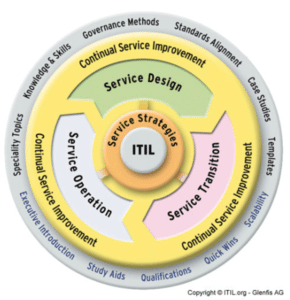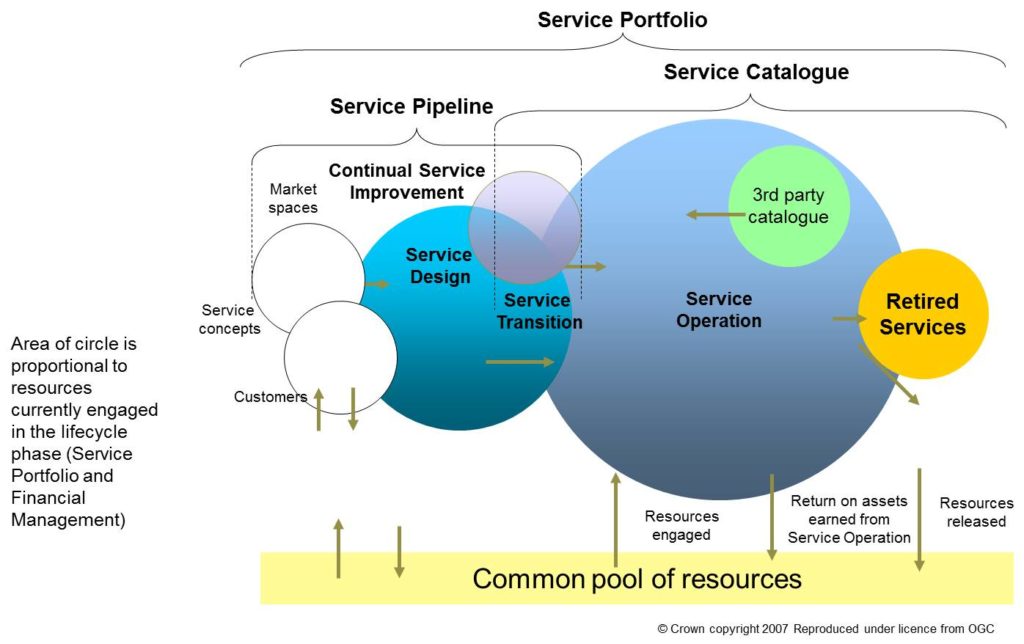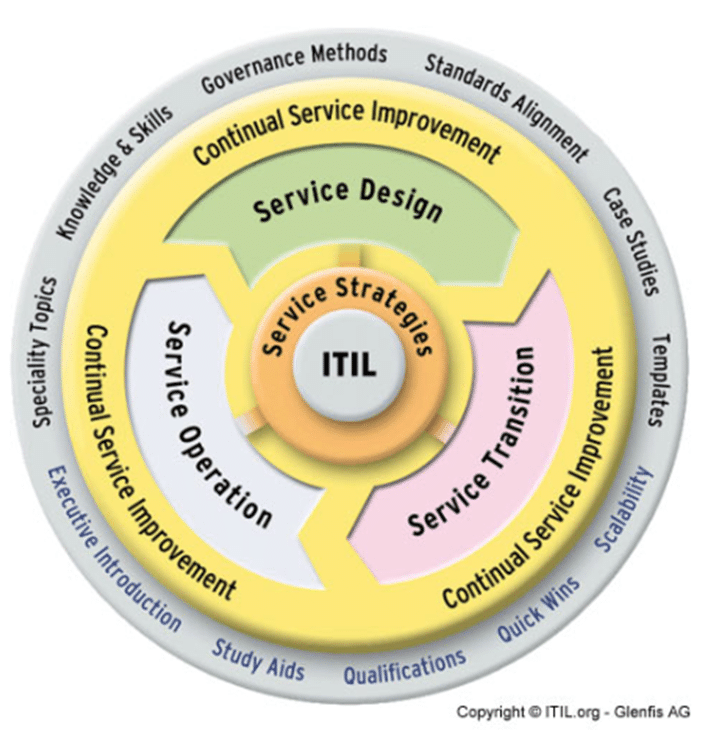
When the Service Lifecycle concept was introduced to the ITIL framework some years ago, the IT Service Management community made a big step forward: ITIL Best Practice turned from a rather isolated process-driven view (ITIL V2) into a more holistic, service lifecycle-oriented approach (ITIL V3), something that didn’t fundamentally change in the newest Edition 2011. In a nutshell, it’s simple as that: IT services, delivering value to clients, pass through a lifecycle from service structuring, design, transition, operations (where the service is delivered to the client) and finally continual optimization. The role of ITSM processes is to support the Service Lifecycle. Just to give you a practical example: Change Management, which supports mainly the Service Transition Lifecycle, makes sure that Changes to Services are introduced into Operations in a controlled manner and with minimal risk.
To most of you as ITSM professionals this of course is nothing new, however, many things in IT are simple in concept and almost none of them are simple in execution. If we look at today’s reality, there often seems to be a missing service lifecycle view and the ‘big picture’ gets lost. Or even worse, people see Service Lifecycle just as a grouping of ITSM processes, as if the Lifecycle is not more than a book consisting different topics. This also shows in ITSM projects, where there is often a pure focus on ITSM processes, e.g. “Let’s define and implement the Incident Management or Service Portfolio Management processes”.
In itself, this is of course not wrong, because at a certain stage you always come down to the point when you have to talk about ITSM processes, however, if you as an IT service provider organization never asked the following basic Service Lifecycle questions, something probably went wrong:
- “What are the IT services I actually deliver to my client?”
- “How does my IT Service provider organization make sure that the IT Services I (re-)defined in Service Strategy are translated down through Design, Transition and finally Service Operation?”
These questions show the importance of the Service Lifecycle approach, because it gives you an idea what constitutes value for your client (the IT Services do) and how you translate it into reality for your client. But how can you achieve this?
In the following I would like to highlight some key points, which will help you to ‘revive’ the Service Lifecycle view:
- Remember: The Service Portfolio is the “backbone” of the Service Lifecycle

The Service Portfolio – Backbone of the Service Lifecycle Service Portfolio Management and later on Service Catalogue Management are excellent methods to govern your services throughout the Service Lifecycle. The Service Portfolio ensures that you as an IT Service Provider Organization have the right mix of services to meet required business outcomes at an appropriate level of investment. Once these services are in the transition and service operation phase (visible to the client), they are maintained as part of the service catalogue, containing detailed service information. One really useful thing to remember is that whatever ITSM process you are discussing in your organization, you always can refer back to the service portfolio and catalogue to make sure, that you are still oriented towards the IT services that has to be delivered to your client.
- Try to look at ITSM processes from a Service Lifecycle perspective
In the beginning of this blog I mentioned that ITSM processes support the Service Lifecycle. What does that mean? First of all it means that you always should bring an ITSM process into the context of the Service Lifecycle. Example: The purpose of Event Management, as described in the books, is to detect events, make sense of them and determine the appropriate control actions. This first looks like a pure Service Operation issue (this is also the way it is described in the Service Operations book), however if you think about it from a lifecycle view, suddenly service design comes into play, because event rule sets first need to be designed in order to enable the detection of events in a meaningful way and of course these rulesets need to be orientated towards the services you deliver – which again makes the connection to the service catalogue mentioned before. - Remember: ITSM processes are not limited to one Service LifeCycle

ITSM processes in the context of the Service Lifecycle With the example mentioned before it also becomes clear that an ITSM process usually does not belong only to one Service Lifecycle as commonly understood. Probably the reason for this misunderstanding is due to the way the human brains works (knowledge needs to be hierarchical) and the fact that each of the processes is described in one of the Service Lifecycle books (everything else would have been difficult). The graph shown on the left illustrates the connection between processes and lifecycle very well.
- Implement Continual Service Improvement
One additional way to revive the Service Lifecycle view is to implement Continual Service Improvement (CSI) in your IT Service Provider Organization. CSI as a discipline spans over all other Service Lifecycles and makes sure that Services are aligned and realigned towards changed business requirements by implementing improvement actions. CSI reviews and analyzes each lifecycle and makes recommendations to either improve the service quality or to increase the cost efficiency.
Above I showed you that although ITIL Best Practice turned into a service lifecycle-oriented framework some years ago, many IT Service provider organizations haven’t done this step yet. There are many ways to change this: Establishing a Service Portfolio, bringing more Service Lifecycle oriented thinking into your ITSM processes or implementing Continual Service Improvement. In the end my message is simple: If you are stuck in the jungle of ITSM processes – lean back, relax and try to see things from a Service Lifecycle perspective – with an eagle’s eye.


with an Eagle’s Eye – BRAVO! Cool dein Blog.
Pingback: 9 Missverständnisse über ITIL | itsm-info